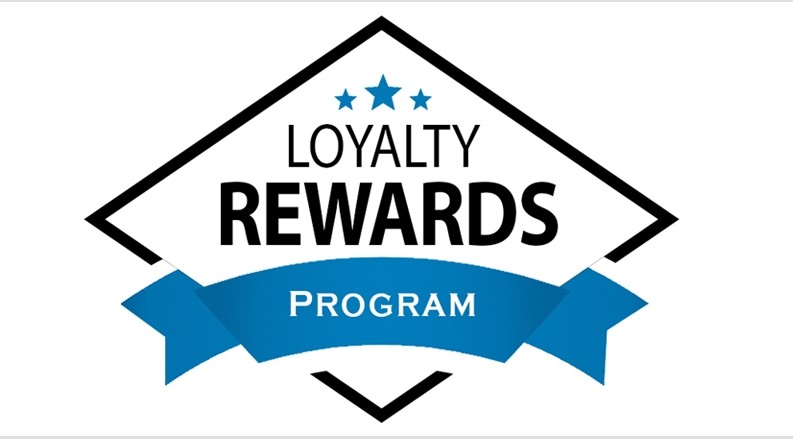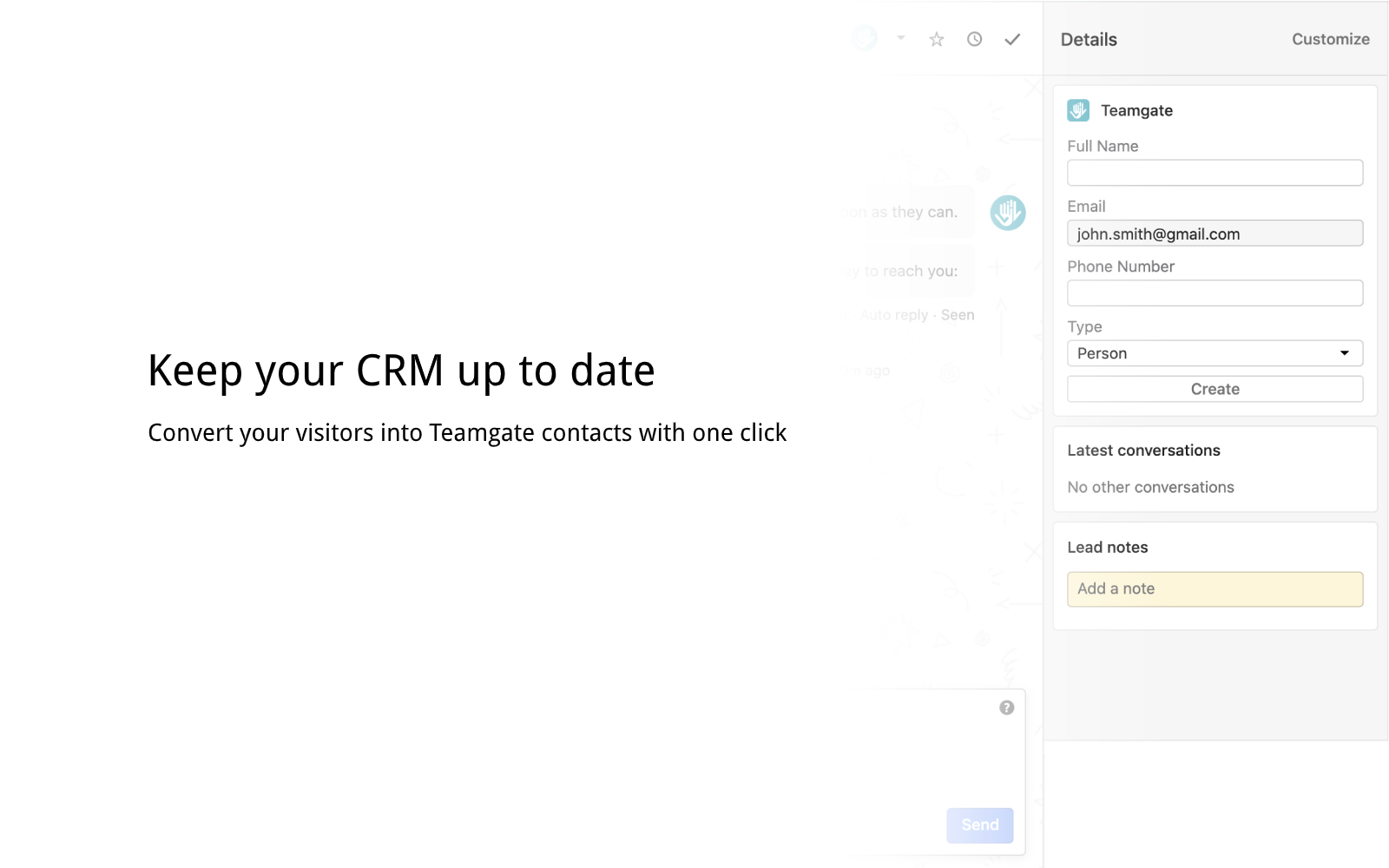
The Power of Connection: Why CRM, Marketing, and Loyalty Rewards Matter
In today’s hyper-competitive marketplace, it’s no longer enough to simply offer a good product or service. Customers have choices, and they’re more discerning than ever. They crave personalized experiences, feel valued, and seek genuine connections with the brands they support. This is where the powerful synergy of Customer Relationship Management (CRM), strategic marketing, and enticing loyalty rewards programs comes into play. It’s a trifecta that, when executed correctly, can transform casual customers into raving brand advocates.
Think about it: how often do you return to a store or choose a specific brand because of a positive experience? Maybe it’s the friendly staff, the ease of ordering, or perhaps a fantastic rewards program that keeps you coming back for more. These are all deliberate strategies, fueled by data and a deep understanding of customer behavior. This guide will delve into the intricacies of each component, showing you how to build a cohesive and effective system that fosters lasting customer loyalty.
Understanding the Cornerstone: CRM
At the heart of any successful customer loyalty strategy is a robust CRM system. CRM, or Customer Relationship Management, is more than just a database; it’s a philosophy, a strategy, and a technology all rolled into one. It’s about understanding your customers, anticipating their needs, and building meaningful relationships. A well-implemented CRM system provides a 360-degree view of each customer, allowing you to personalize interactions and tailor your marketing efforts.
What is CRM?
In its simplest form, CRM is a system that manages all your interactions with current and potential customers. This includes:
- Contact Information: Names, addresses, phone numbers, email addresses, and social media profiles.
- Interaction History: Records of past purchases, support tickets, website visits, and email communications.
- Sales Pipeline: Tracking leads, opportunities, and the progress of deals.
- Customer Segmentation: Grouping customers based on demographics, behavior, and purchase history.
By centralizing this information, CRM empowers businesses to:
- Improve Customer Service: Quickly access customer information to resolve issues efficiently and personalize support.
- Enhance Sales Effectiveness: Identify and prioritize leads, track sales performance, and forecast future revenue.
- Personalize Marketing Campaigns: Segment customers and deliver targeted messaging based on their preferences and behavior.
- Increase Customer Retention: Identify at-risk customers and proactively address their needs.
Choosing the Right CRM System
The market is flooded with CRM solutions, each with its own strengths and weaknesses. Selecting the right one for your business depends on your specific needs and budget. Some popular options include:
- Salesforce: A comprehensive and highly customizable CRM platform, ideal for large enterprises.
- HubSpot CRM: A free and user-friendly CRM, perfect for small to medium-sized businesses.
- Zoho CRM: A feature-rich and affordable CRM solution, suitable for businesses of all sizes.
- Microsoft Dynamics 365: A powerful CRM platform that integrates seamlessly with other Microsoft products.
When evaluating CRM systems, consider the following factors:
- Scalability: Can the system grow with your business?
- Integration: Does it integrate with your existing marketing, sales, and customer service tools?
- Ease of Use: Is it intuitive and easy for your team to learn and use?
- Reporting and Analytics: Does it provide the insights you need to track performance and make data-driven decisions?
- Cost: Does it fit within your budget?
The Art and Science of Marketing in the CRM Era
Once you have a solid CRM foundation, you can leverage it to create highly targeted and effective marketing campaigns. This is where the magic truly happens – the ability to reach the right customer with the right message at the right time.
Data-Driven Marketing Strategies
CRM provides the data you need to understand your customers’ preferences, behaviors, and pain points. This information is invaluable for developing targeted marketing strategies. Here are some examples:
- Personalized Email Marketing: Send targeted emails based on customer purchase history, browsing behavior, and demographics.
- Behavioral Targeting: Show website visitors relevant ads based on their activity on your site.
- Customer Segmentation: Divide your audience into distinct groups based on shared characteristics and tailor your messaging accordingly.
- Lead Nurturing: Guide potential customers through the sales funnel with a series of automated emails and content.
Marketing Automation: Streamlining Your Efforts
Marketing automation tools, often integrated with CRM systems, can significantly streamline your marketing efforts. Automation allows you to:
- Automate Email Campaigns: Send automated welcome emails, follow-up emails, and promotional offers.
- Manage Social Media: Schedule social media posts and track engagement.
- Segment and Target Audiences: Automatically segment your audience and deliver personalized content.
- Track and Analyze Results: Monitor the performance of your campaigns and identify areas for improvement.
Content is King: Creating Engaging Content
No matter how sophisticated your CRM and marketing automation tools are, your content is still king. Creating high-quality, engaging content that resonates with your target audience is essential for driving conversions and building brand loyalty. This includes:
- Blog Posts: Share valuable information and insights related to your industry.
- Videos: Create engaging video content that showcases your products or services.
- Infographics: Present data and information in a visually appealing format.
- Case Studies: Showcase the success of your customers.
- Ebooks and Whitepapers: Provide in-depth content on specific topics.
The Sweet Spot: Loyalty Rewards Programs
Loyalty rewards programs are a powerful tool for incentivizing repeat business and fostering customer loyalty. They reward customers for their ongoing support, making them feel appreciated and valued. When combined with CRM and targeted marketing, loyalty programs can be incredibly effective in driving customer retention and increasing revenue.
Designing a Successful Loyalty Program
Creating a successful loyalty program requires careful planning and execution. Consider the following factors:
- Define Your Goals: What do you want to achieve with your loyalty program? (e.g., increase repeat purchases, drive customer engagement, acquire new customers)
- Identify Your Target Audience: Who are you trying to reward?
- Choose the Right Rewards: What rewards will motivate your customers? (e.g., discounts, free products, exclusive access, early access to sales)
- Establish Program Tiers: Offer different levels of rewards based on customer spending or engagement.
- Make it Easy to Join and Use: The enrollment process should be simple, and the rewards should be easy to redeem.
- Promote Your Program: Make sure your customers are aware of your loyalty program and its benefits.
- Track and Analyze Results: Monitor the performance of your program and make adjustments as needed.
Types of Loyalty Programs
There are many different types of loyalty programs, each with its own strengths and weaknesses. Here are some popular options:
- Points-Based Programs: Customers earn points for every purchase, which they can redeem for rewards.
- Tiered Programs: Customers move up through different tiers based on their spending or engagement, unlocking increasingly valuable rewards.
- Subscription Programs: Customers pay a recurring fee for exclusive benefits, such as discounts, free shipping, and early access to sales.
- Cash Back Programs: Customers earn a percentage of their purchases back in the form of cash or store credit.
- Hybrid Programs: Combine elements of different program types.
Integrating Loyalty Programs with CRM
The true power of a loyalty program is unleashed when it’s integrated with your CRM system. This allows you to:
- Track Customer Behavior: Monitor customer purchases, engagement, and preferences.
- Personalize Rewards: Offer targeted rewards based on customer behavior.
- Automate Communication: Send automated emails and notifications to customers about their rewards and progress.
- Segment Customers: Segment customers based on their loyalty program activity.
- Measure Program Performance: Track key metrics, such as customer retention rate, average order value, and lifetime value.
Putting It All Together: A Holistic Approach
The most successful businesses understand that CRM, marketing, and loyalty rewards are not isolated components but rather interconnected elements of a holistic customer experience. They work together to create a virtuous cycle of engagement, satisfaction, and loyalty.
Building a Customer-Centric Culture
To truly harness the power of this trifecta, you need to foster a customer-centric culture within your organization. This means:
- Prioritizing Customer Needs: Make sure your products, services, and marketing efforts are focused on meeting your customers’ needs.
- Empowering Your Employees: Give your employees the authority and resources they need to provide excellent customer service.
- Collecting and Analyzing Customer Feedback: Regularly solicit feedback from your customers and use it to improve your products, services, and processes.
- Measuring Customer Satisfaction: Track key metrics, such as Net Promoter Score (NPS) and Customer Satisfaction Score (CSAT).
Continuous Improvement
The world of CRM, marketing, and loyalty rewards is constantly evolving. To stay ahead of the curve, you need to continuously improve your strategies and tactics. This includes:
- Staying Up-to-Date: Keep abreast of the latest trends and technologies.
- Experimenting and Testing: Try new approaches and measure the results.
- Analyzing Data: Use data to identify areas for improvement and make data-driven decisions.
- Adapting to Change: Be prepared to adapt your strategies as customer behavior and market conditions change.
Real-World Examples: Success Stories
Let’s look at a couple of real-world examples of businesses that are successfully leveraging CRM, marketing, and loyalty rewards to drive customer loyalty:
Starbucks
Starbucks is a master of customer loyalty. Their Starbucks Rewards program, integrated with their mobile app, allows customers to earn stars for every purchase. These stars can be redeemed for free drinks, food, and merchandise. The app also provides personalized offers and recommendations based on customer purchase history. This comprehensive approach has helped Starbucks build a loyal customer base and increase sales.
Sephora
Sephora’s Beauty Insider program is another excellent example of a successful loyalty program. Customers earn points for every purchase, which they can redeem for samples, products, and exclusive experiences. The program also offers personalized recommendations, exclusive content, and early access to sales. Sephora’s focus on personalized experiences and exclusive benefits has made it a leader in the beauty industry.
Conclusion: The Path to Lasting Customer Loyalty
In conclusion, building lasting customer loyalty is a multifaceted process that requires a strategic approach. By leveraging the power of CRM, targeted marketing, and enticing loyalty rewards programs, businesses can create meaningful relationships with their customers, drive repeat business, and ultimately achieve sustainable success. Remember, it’s not just about transactions; it’s about building connections and making your customers feel valued. Embrace the power of data, personalize your interactions, and reward your customers for their loyalty. The rewards – increased revenue, brand advocacy, and long-term success – will be well worth the effort.
By focusing on these key areas, businesses can create a customer-centric ecosystem that fosters loyalty and drives sustainable growth. The journey to lasting customer loyalty is an ongoing process, but the rewards are well worth the effort. Embrace the power of connection, and watch your business thrive.
